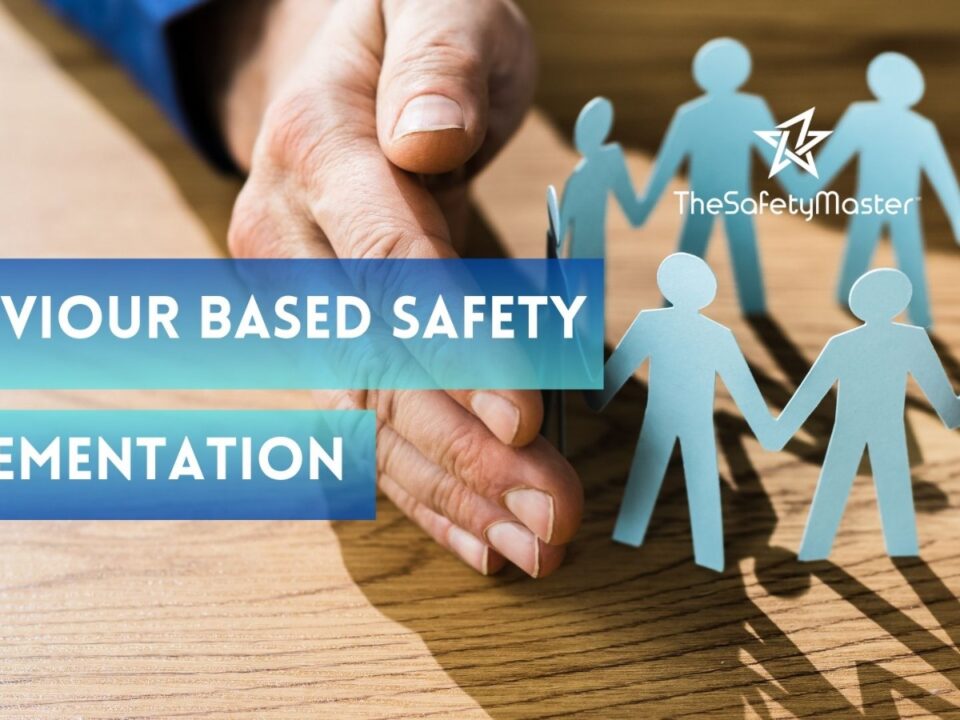Behavior-Based Safety Implementation: Overcoming Resistance

Material Handling Audit Including Crane, Forklift, Hydra, etc.: Ensuring Safe and Efficient Operations
January 16, 2025
Fire Safety Audit: The Role of Technology in Modern Fire Safety Audits
January 18, 2025Introduction
Behavior-Based Safety (BBS) is a proactive approach aimed at preventing workplace accidents by focusing on the behaviors of employees. It’s a systematic process that relies on observation, feedback, and positive reinforcement to encourage safe behavior and reduce unsafe practices. Despite its effectiveness, the implementation of BBS often encounters resistance from employees and management alike. This resistance can stem from various factors, including a lack of understanding, fear of change, and concerns about surveillance. Overcoming this resistance is crucial for the successful implementation of BBS. In this essay, we will explore the strategies to overcome resistance to BBS implementation and how organizations can foster a safety culture that embraces behavioral safety.
Understanding Resistance to BBS
Resistance to change is a natural human reaction, and when it comes to safety initiatives like BBS, this resistance can manifest in various ways. Employees may feel that BBS is intrusive, that it blames individuals for accidents, or that it adds extra work without clear benefits. Management may resist BBS due to concerns about the cost, time commitment, or fear that it could expose organizational weaknesses.
Common Reasons for Resistance:
- Fear of Blame: Employees may fear that BBS focuses on individual behavior and places blame on them for accidents, rather than addressing systemic issues.
- Lack of Understanding: Resistance often stems from a lack of understanding of what BBS is and how it benefits both the organization and the employees.
- Distrust of Management: If there is a history of poor communication or mistrust between employees and management, BBS can be seen as another top-down initiative that disregards workers’ concerns.
- Cultural Barriers: In organizations with a deeply ingrained culture that prioritizes production over safety, BBS may be seen as a hindrance to productivity.
- Concerns About Surveillance: Employees may perceive BBS as a form of monitoring or surveillance, leading to discomfort and resistance.
Strategies for Overcoming Resistance
To successfully implement BBS, it is essential to address the underlying causes of resistance. Here are several strategies that organizations can use to overcome resistance and foster a culture of safety.
1. Engage Leadership and Management
Leadership commitment is crucial for the success of any safety initiative. Without the active support of management, employees are unlikely to take BBS seriously. Leaders must not only endorse BBS but also participate in the process. When employees see that safety is a priority for their leaders, they are more likely to embrace the initiative.
Action Steps:
- Leaders should actively communicate the importance of BBS and how it aligns with the organization’s overall goals.
- Management should be visible in their support for BBS, participating in training sessions, and being involved in observations and feedback.
- Provide resources and time for BBS activities to demonstrate commitment.
2. Involve Employees in the Process
One of the most effective ways to overcome resistance is to involve employees in the design and implementation of BBS. When employees feel that they have a voice in the process, they are more likely to buy into the program.
Action Steps:
- Form safety committees that include representatives from all levels of the organization to give input on BBS implementation.
- Involve employees in the development of observation checklists and feedback processes.
- Encourage employees to take ownership of safety by participating in peer-to-peer observations and feedback.
3. Educate and Train Employees
Education and training are key components of overcoming resistance to BBS. Employees need to understand what BBS is, why it is being implemented, and how it will benefit them. Training should also address any misconceptions and provide employees with the skills they need to participate effectively.
Action Steps:
- Conduct training sessions that explain the principles of BBS and its benefits to both employees and the organization.
- Use real-life examples and case studies to illustrate how BBS has successfully improved safety in other organizations.
- Provide ongoing training and refreshers to keep safety top of mind.
4. Foster a Positive Safety Culture
A positive safety culture is one where safety is valued as much as productivity and quality. In such a culture, BBS is seen as a tool for improving safety rather than a punitive measure.
Action Steps:
- Recognize and reward safe behaviors, both individually and collectively.
- Create a non-punitive environment where employees feel safe to report unsafe conditions or behaviors without fear of retribution.
- Celebrate successes, such as reductions in accidents or improvements in safety behaviors, to reinforce the value of BBS.
5. Communicate Openly and Transparently
Communication is critical in overcoming resistance to BBS. Employees need to know what is expected of them, how the program will be implemented, and what the outcomes will be. Transparent communication helps to build trust and reduce fear.
Action Steps:
- Hold regular meetings to discuss the progress of BBS implementation and address any concerns or questions.
- Share data and results from BBS observations and feedback sessions to show how the program is making a difference.
- Be open to feedback from employees and make adjustments to the program as needed.
6. Address Concerns About Surveillance
One of the most common concerns about BBS is that it feels like surveillance. To overcome this, it is important to frame BBS as a supportive tool rather than a monitoring system.
Action Steps:
- Emphasize that BBS is about observing behaviors, not monitoring individuals, and that the goal is to improve safety, not to punish.
- Ensure that observations are conducted in a positive and constructive manner, focusing on reinforcing safe behaviors rather than criticizing unsafe ones.
- Involve employees in the observation process to reduce the perception of being watched.
7. Demonstrate Quick Wins
Early successes can help to build momentum for BBS. By demonstrating quick wins, organizations can show employees that BBS works and that their efforts are making a difference.
Action Steps:
- Identify areas where BBS can have an immediate impact and focus on those first.
- Publicize early successes and use them to build enthusiasm for the program.
- Continuously measure and report on the effectiveness of BBS to maintain momentum.
Conclusion
Behavior-Based Safety is a powerful tool for improving workplace safety, but its success depends on overcoming resistance to change. By engaging leadership, involving employees, providing education and training, fostering a positive safety culture, communicating openly, addressing concerns about surveillance, and demonstrating quick wins, organizations can overcome resistance and successfully implement BBS. Ultimately, the goal of BBS is to create a safer work environment where employees feel valued and protected, and where safety is a shared responsibility.
In conclusion, overcoming resistance to BBS is not just about addressing concerns—it’s about creating a culture where safety is an integral part of the organizational fabric. With the right approach, BBS can lead to significant improvements in safety performance and create a workplace where everyone goes home safely at the end of the day.




